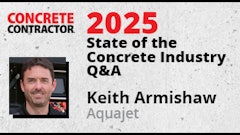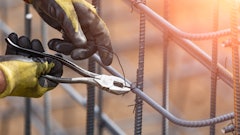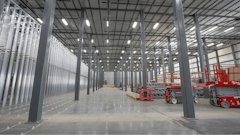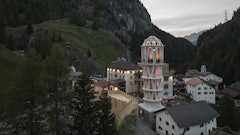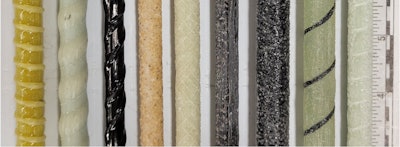
On May 2, the ASTM announced that its composite materials committee (D30) had developed a “new standard specification for the latest generation of fiber reinforced polymer (FRP)” rebar. However, its more like a recognition than a new standard. In other words, a better representation of the performance of FRP reinforcement bar.
If this reads as if written in circles, Concrete Contractor contacted Francisco De Caso, PhD, LEED A.P. to help us better understand the situation and what the D8505 new standard means for the concrete contractor in construction.
ASTM’s effort directly relates to United Nations Sustainable Development Goals #6, 9, 11, and 12 on clean water and sanitation, industry, sustainable cities, and responsible production/consumption, respectively.
As Associate director of the Industry University Collaborative Research ‘Center for Integration of Composites into Infrastructure (CICI)’, De Caso is the principal scientist and also manages an ISO 17025 accredited structures and materials laboratory at the University of Miami where they evaluate and certify FRP products. Put simply, “we are in the business of implementing and translating knowledge of composites into infrastructure,” he says. The university’s CICI is partly funded by the National Science Foundation as well as industry members. He also sits co-chair of ASTM D30.10 Composites for Civil Structures Committee with Dr. Russell Gentry.
In the announcement, ASTM describes the standard as “a milestone” with decades of collaboration behind the effort as FRP continues integrate into the infrastructure of construction. It’s been a long time coming; the process of creating the specification for FRP bar began mid-2000’s. This was about the same time as De Caso was starting his graduate education. Engineers, owners, and participating firms had called for products with higher properties.
Since then, more FRP bar manufacturers have entered the industry with a product that can meet or exceed the standards – with the validated research and data to back up the claims. “That’s an important line to draw with ASTM,” explains De Caso. “ASTM is not going to develop a specification for a prototype of a product. [Standards] are for products that are readily and commercially available. The participation of additional manufacturers brought voice to drive the advancement of this new spec to improve the properties.”
With participation and collaboration between the agencies in Canada, North America and Europe, ASTM recognized the trends to push the properties so that the end design and application of reinforced concrete elements can meet the required / designed specs.
“The higher performance specified for bars, results in a significant improvement of design and construction of concrete structures reinforced with non-metallic FRP bars," says De Caso.
Seeing the value, he says that the standard could be useful across the concrete construction value chain, translating into more efficient and sustainable design of concrete structures. He also notes in the announcement that the specification contains critical contributions like the inclusion of basalt FRP bars to existing glass FRP bars as well as higher-performance specifications.
What Has Changed?
Originally, the plan was to follow the structure of the ASTM specification of mild-steel rebar (which defines 60, 80, and 100 grade in the same specification) to include a “second grade rebar.” However, there were a couple of problems that stood in the way. The ACI 440.1R document was in the process of getting to the 440.11, published in September 2022, and a lot of the founding rationale and models were based on the properties use or specified within ASTM D7957.
ACI reached out with concerns that expanding and putting other bars within the same spec might create confusion within the code. Doing so would have needed additional language to exclude certain things referenced in the spec and delayed the process of publishing the building code.
It was in this essence that the development of the specification was created.
“In a sense, it follows the same format as the previous [D7957], with the main three differences,” says De Caso.
- Includes basalt fibers (per ASTM D8448) and specifies glass fibers per ASTM D578
- Includes epoxy as a resin constituent (ASTM D7957 only specifies vinyl as a reference)
- The specification of higher properties of the modulus and corresponding strength, pushing the structural implementation of the FRP bar
He explains further on the third difference “This was needed for several reasons,” he says. “As when you increase the modulus, your reinforced concrete section design becomes significantly more efficient. It becomes more competitive with traditional materials such as steel reinforced concrete. And there's been a push from several DOTs to have FRP reinforcement products with higher modulus and therefore higher strength so that they can use them in structural applications that otherwise those designs wouldn't be as feasible.”
Put simply, ASTM D8505 wasn’t set for the manufacture of a stronger FRP bar, it reflects the state of the art by defining the minimum properties that the higher properties FRP bars have to meet.
But there is a caveat.
Many bar manufacturers have been making bars to D7957 but with significantly much higher strength than the minimum guaranteed requirements; D8505 recognizes this by more accurately specifying that performance.
The main key aspect happens at the design stage. “In a sense, the ASTM is now reflecting that this higher property product exists,” says De Caso “Engineers now, rather than designing with the lower modulus – they can now design with this higher modulus of elasticity.”
“What happens is that [manufacturers] would put a product with a higher modulus but an engineer that is designing a project thinks, ‘I don’t know which bar I’m going to be using for my project.’ That’s up to the contractor. So, what modulus do I use for design? What is my reference modulus? Whatever the spec tells me is the minimum, I will use that."
He continues.
"There’s been projects that we’ve done with the Florida DOT, for instance, where they would go back and say ‘We’re going to increase the minimum modulus…and then in the bidding state that ‘a bar shall comply with ASTM D 7570’ except that they have to have a higher modulus. In a sense, the ASTM is reflecting where the industry has been moving. And now you have a specification that recognizes those efforts from all the stakeholders.”
How Does D8505 Affect Contractors
Affect might not be the best word here – facilitate might work better. As De Caso explains it, ultimately the concrete contractor is going to have to provide bid documents and material specifications. The standard would facilitate the process with projects specified with non-metallic FRP bars with more clear definitions of what is needed.
Engineers can differentiate between modulus options and translate that into the bid documents.
“I think it will help,” says De Caso. “Contractors that embrace the innovative side of things will be able to reduce uncertainty with these higher properties.”
The standard also may allow contractors to work on projects that would normally require steel with a corrosion resistance addition, to work them without steel. However, some contractors that have switched from steel reinforcement to reinforcing with non-metallics aren’t doing do for the corrosion resistance alone, but in the found savings.
“They’re realizing that they can save between 30-50% in labor savings from the cage construction and placing reinforcement,” says De Caso. With the lighter weight of bar, the work that would normally take five craft professionals might only need two or use a lower capacity crane. With a specification of a higher grade, higher modulus defined from the beginning, the contractor can then leverage many benefits at the construction site.
The Bottom Line
For De Caso, D8505 enables the concrete contractor a few additional tools in the construction value chain, a lot more beyond the reinforcement product selection, such as redefine the concrete mix by not using passivating agents and admixtures or reduce the cover (with less concrete used the less money put up). No steel, no corrosion.
Ultimately, the standard isn’t the call for a new FRP. There is no new hybrid bar suddenly on the market.
“This is nothing new. This is not innovative. We're not reinventing the wheel,” reminds De Caso. “The bars that are being reflected in this new spec have been used for the last decade have been produced for the last decade. I'm sorry to sound boring, but it is just not new. It is enabling. Smart contractors…will start to realize that they can create value because these materials are enabling all these other aspects that we talked about – ultimately adding to the bottom line: improve productivity and efficiency.”




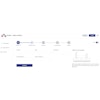

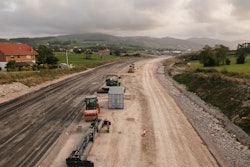

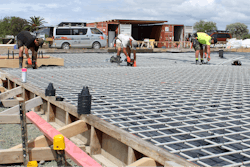






![Strux Macrofibers 58c9b97fd4aaf[1]](https://img.forconstructionpros.com/mindful/acbm/workspaces/default/uploads/2025/08/strux-macrofibers58c9b97fd4aaf1.cNEEIfY9kp.png?ar=16%3A9&auto=format%2Ccompress&fit=crop&h=135&q=70&w=240)
